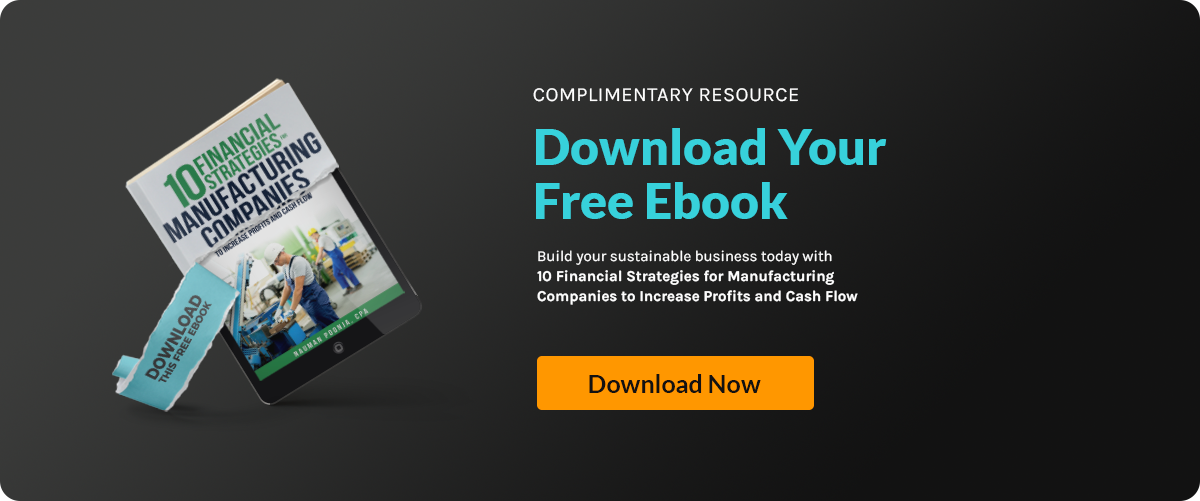Accounts Receivable and Effective Collections Best Practices Many people get confused with the...
Accounts Payable vs. Accounts Receivable: What You Need to Know

For manufacturing businesses, keeping an eye on cash flow is critical. Two terms that directly influence your company’s financial health are Accounts Payable (AP) and Accounts Receivable (AR). These functions are the heartbeat of your cash flow cycle—one tracks money going out, the other tracks money coming in.
Let’s break down the difference between AP and AR and explain how manufacturers can manage both for optimal working capital and stronger operations.
What Is Accounts Payable (AP)?
Accounts Payable means the money your business owes to vendors and suppliers for goods or services you bought on credit. It’s a short-term debt listed as a liability on your balance sheet. You usually have 30 to 90 days to pay.
In manufacturing, AP often includes costs for raw materials, parts, machine repairs, or factory utilities. Managing AP well helps you avoid late fees, keep good relationships with suppliers, and make sure you have enough cash for other needs like payroll or equipment.
For example, if you pay a bill too early, you may run short on money for other expenses. But paying too late can damage your supplier relationship.
Want to learn more about handling business expenses? Read: How Much Does Bookkeeping Cost for Manufacturers
Common AP Examples in Manufacturing:
- Bills for raw materials
- Lease payments on factory equipment
- Utility bills like electricity and water
Why AP Matters:
Managing AP is important because it helps your business in several ways:
-
Avoid late fees: Paying on time means you don’t waste money on penalties.
-
Build trust with vendors: When you pay regularly, suppliers are more likely to offer better terms or help you during tough times.
-
Protect cash flow: By planning when to pay bills, you make sure your business always has enough money to cover other important costs like payroll, equipment repairs, or shipping.
Good AP practices give you better control over your working capital, which helps your business grow without surprises.
What Is Accounts Receivable (AR)?
Accounts Receivable is the money customers owe you for products or services you already delivered. It’s listed as an asset on your balance sheet because it’s money you expect to collect.
In manufacturing, this often means sending out invoices after delivering large orders to other companies. Until the customer pays, that invoice is counted as part of your AR.
For example, if you make and ship 1,000 metal parts to another company, you’ll send them an invoice. Until they pay, that money is part of your AR.
Managing AR well means your business gets paid faster, which helps keep your cash flow strong.
Common AR Examples in Manufacturing:
-
Outstanding invoices for B2B orders
-
Payment terms like Net 30 or Net 60
Why AR Matters:
AR brings money into the business. If customers pay late, it can cause cash shortages—even if sales are strong.
-
Supports cash flow: Timely payments mean more money on hand to cover payroll, supplies, or new projects.
-
Prevents slowdowns: If customers take too long to pay, you may struggle to buy materials or invest in growth.
-
Improves planning: Knowing when money is coming in helps you plan production and pay bills.
Related: Effective Cash Flow Strategies Every Manufacturer Needs
The Difference Between AP and AR
| Feature | Accounts Payable (AP) | Accounts Receivable (AR) |
|---|---|---|
| Definition | Money owed to others | Money owed to you |
| Appears On | Liabilities | Assets |
| Managed By | Procurement/Finance Team | Sales/Finance Team |
| Impact on Cash Flow | Outflow (expenses) | Inflow (revenue) |
| Goal | Delay payment without penalties | Speed up collection |
Understanding this difference is key for forecasting and maintaining a healthy balance between outgoing and incoming cash.
Tips for Managing AP in Manufacturing
-
Negotiate better payment terms with your suppliers — Ask if you can have more time to pay your bills. For example, instead of paying in 30 days, see if you can pay in 60 days. This gives you more time to manage your cash.
-
Use software to approve invoices faster — Try using digital tools to track and approve bills quickly. The faster you approve invoices, the better you stay on top of your payments.
-
Watch your payables aging report to stay ahead of due dates — Look at a report that shows which bills are coming up soon and which ones are late. This helps you plan your payments and avoid late fees.
-
Group payments to save time and stay organized — Instead of paying bills one at a time, group them together. This saves time and helps you stay organized when paying vendors.
Tips for Managing AR in Manufacturing
-
Send invoices right away after delivering goods — Don’t wait to bill your customers. The sooner you send the invoice, the sooner they can pay you.
-
Give discounts for early payments — Offer a small discount to customers who pay early. This can encourage them to pay faster.
-
Check your AR aging regularly to catch slow-paying customers — Review reports that show which customers are late. This helps you follow up quickly and keep your cash flow steady.
-
Use tools to send reminders automatically — Set up your software to send reminders to customers before their payment is due. This helps reduce late payments and keeps money coming in.
Related Reading: Financial KPIs: The Numbers That Help Your Business Succeed
Why AP & AR Management Matters in Manufacturing
In manufacturing, even small money problems can lead to big delays. You might run out of materials or miss a chance to grow. If you don’t collect money fast enough from customers (AR), you could end up short on cash. If you don’t pay your suppliers on time (AP), they might stop working with you.
That’s why it’s important to:
-
Keep your AP and AR records up to date
-
Follow up quickly on unpaid invoices
-
Use accounting software or an ERP system to track everything in one place
Good management of AP and AR means you’ll always know how much cash is coming in and going out. This helps you plan better, avoid surprises, and grow your manufacturing business with confidence.
Accounts payable and accounts receivable aren’t just back-office functions—they shape how your manufacturing business operates and grows. When managed well, they allow for better planning, stronger vendor/customer relationships, and more consistent cash flow.
Need help optimizing your AP/AR processes? Connect with Accounovation to strengthen your financial systems.







